Publication overview 2023: Using our (f)NIRS devices to measure in the brain
We are happy that our devices measuring brain oxygenation were increasingly used in various application areas in 2023. In this blogpost, we illustrate research fields using our systems, and highlight important studies published in 2023 with our (f)NIRS devices.
Functional Near-Infrared Spectroscopy (fNIRS) is a non-invasive neuroimaging technology that measures relative concentration changes in oxygenated hemoglobin (O2Hb) and deoxygenated hemoglobin (HHb) reflecting local brain activity. fNIRS offers certain advantages compared to similar techniques, as it is often portable, relatively easy to use and affordable. Hence, it can be employed in a variety of research fields to measure the neural activity of anyone; healthy or diseased, children or elderly. An overview of the application areas that utilized our fNIRS devices in 2023 can be seen in Figure 1.
Application Areas using Artinis devices to measure in the brain 2023
To enable usage of fNIRS for everyone and in every research setting, we offer fNIRS devices with superior features: The Brite Family incorporates devices that all come with multi-power gain control, ambient light filter and inertial measurement unit (IMU) to measure motion data. However, all devices individually can provide solutions for different measurement locations and subjects of all ages from infants to adults.
In the following paragraph, application possibilities per research area are further explored, and interesting publications per area are highlighted and shortly summarized.
Brain Function - Prefrontal Cortex
In 2023, researchers published 54 papers that used Artinis devices to measure activation in the prefrontal cortex. Studies could be divided in three different research areas: cognitive neuroscience, clinical neuroscience and applied neuroscience, as shown in Figure 2.
Research areas with prefrontal cortex publications in 2023
(f)NIRS devices used to study the prefrontal cortex in 2023
The devices that were used to study frontal brain regions are the Brite, OctaMon, PortaLite and OxyMon (see Figure 3). The OctaMon and PortaLite are devices that are specifically designed for prefrontal measurements, whereas the Brite and OxyMon are devices that enable measuring from any cortical region. The device employed in most studies is the Brite, our truly portable and versatile fNIRS device to measure from any cortical region.
In the following paragraph, important cognitive and applied neuroscience studies with our devices are depicted. Examples for clinical neuroscience studies can be found in the category “clinical and rehabilitation”.
Cognitive Neuroscience
In cognitive studies published in 2023, our devices were used to measure prefrontal activation after interventions, such as cognitive training or exercise. Additionally, they were employed to investigate mental workload during the performance of various tasks. As an example of the latter, Ranchod et al. performed a study to assess differences in brain activity of older and younger adults. Both groups conducted tasks with increasing cognitive load while the Brite was applied. Findings showed increased prefrontal activity during all tasks in older compared to younger adults, as well as higher brain activation in the elderly during high compared to low task load.
As our devices are completely portable, non-invasive and comfortable, they were also utilized to study cognitive and social development in toddlers and children in the last year. A study by Zheng et al., for instance, gave insights into motor learning skills and cognitive development in preschoolers using fNIRS. The Brite was applied during the performance of working memory tasks with different difficulty levels. Significant differences in brain activity of children with high vs low motor learning skills, and when performing tasks with higher vs lower difficulty level could be found.
Applied Neuroscience
In applied neurosciences, Artinis fNIRS devices were used in different fields, for instance environmental, economic, or emotional studies. In case of the latter, Ruotsalo et al. conducted a study to quantify and predict valence, the positive and negative quantification of affective estimation, as a new dimension of visual similarity using brain-computer interface (BCI). The Brite was utilized to record prefrontal brain activity. Results revealed significant effect of valence on neural activity responses.
Brain Function - Other brain regions
Some of our fNIRS devices, such as Brite and Brite Lite, offer the possibility to measure from any desired cortical region. In 2023, 12 papers were published that used either the Brite or the OxyMon to measure from the motor and temporal cortex. Cockx et al., for instance, performed a study to examine if fNIRS can help detect difficult-to-measure leg areas of the primary motor cortex (M1). The DualBrite including short channels was used to measure over motor and frontal areas, while participants performed previously- and newly-learned finger and leg movements. Significant increases of O2Hb during finger tapping and leg tapping in M1 were reported. Short channels were used successfully to remove systemic fluctuation due to leg movements.
Clinical and Rehabilitation
Next to healthy subjects, our fNIRS devices can also be used in the clinical population, as they are designed to provide fast set-up time and increased comfort. In 2023, 25 publications were released that utilized Artinis devices to measure brain oxygenation in different clinical fields, such as neurology, gerontology, cardiology, or psychiatry. An overview of the application area division is presented in Figure 4.
Clinical application areas with fNIRS publications 2023
(f)NIRS devices used in clinical research 2023
In clinical research, our fNIRS devices were used on the one hand to investigate differences in brain activity of diseased and healthy populations. Based on that, the potential of fNIRS as a diagnostic tool for different disorders was tested. On the other hand, fNIRS was applied to assess the effectiveness of rehabilitation strategies.
Yi et al. assessed the potential of a combined fNIRS-EEG system as an accurate diagnostic tool for depression. fNIRS, using the OctaMon, and EEG were measured during resting state in patients with major depressive disorder (MDD) and healthy controls. EEG data, as well as alternative features, were extracted, feature selection was applied and a support vector machine to classify depression was built. The accuracy of the classifier could be improved when utilizing EEG-fNIRS features (92.7%) compared to utilizing only EEG features (81.8%), suggesting that a hybrid solution might help to classify depression.
With a similar goal but in gerontology, Klop et al. investigated if NIRS can be used as a diagnostic tool to identify orthostatic hypotension by conducting long-term measurements in daily life. NIRS was acquired bilaterally on the forehead with the PortaLite from both long and short channels. Then, O2Hb was compared to values of continuous blood pressure (BP) and Doppler-measured cerebral blood velocity (CBv) measured during different postural changes. A good association between BP and O2Hb could be found especially in the first 30 seconds after postural change.
Sports Science
Measuring brain oxygenation is increasingly important in the area of sports science in professional athletes, healthy subjects and diseased participants of all ages. fNIRS in sports and exercise sciences is mainly applied to understand mechanisms in the brain during certain movements, as well as to investigate the effect of exercise intervention on a neural level. As our devices, such as Brite, are completely portable, they can be perfectly used during movement. In 2023, 13 papers using our fNIRS devices in sports science were published.
Teo et al. investigated if motor control differs when following concentric (CON) vs eccentric (ECC) muscle contraction. Brain activity was measured in motor and prefrontal areas, while CON and ECC were performed at high and low concentration intensities. Higher O2Hb increase in the primary motor and dorsolateral prefrontal cortex could be found in high-intensity compared to low-intensity concentrations. O2Hb did not differ significantly between both contraction types.
Qi et al. conducted a study to assess the effect of Tai Chi and brisk walking on cognitive performance in older adults using the OctaMon to measure prefrontal cortex activation. Both Tai Chi and walking led to increased brain activity and quicker reaction time during Stroop test, suggesting cognitive improvement in elderly adults.
Hypoxia
In hypoxia and altitude studies fNIRS is used to assess the effects of hypoxic conditions on the brain. In 2023, four studies measuring brain oxygenation during hypoxia could be found. In a multi-experiment study, for instance, Williams et al. examined if moderate-intensity exercise can improve decline in executive function caused by hypoxia and sleep deprivation while measuring prefrontal with the PortaLite during rest and exercise. Results showed significant improvements of executive functions, despite sleep and hypoxic status.
Multimodality
Multimodality means the combination of different (neuroimaging) technologies to get a more complete picture of the brain. Our fNIRS devices can be combined with different EEG systems on one headcap to form a wearable fNIRS-EEG solution for any research purpose. This setup can also be combined with Neurostimulation (tES).
In 2023, seven multimodality studies with our fNIRS devices could be identified. In one of them, Zakeri et al. investigated the mental workload of factory workers during interaction with collaborative robots by measuring physiological (e.g. neuroimaging) and traditional (e.g. behavioral and subjective) parameters. fNIRS was applied in the prefrontal cortex simultaneously with EEG during the performance of a smart factory-related task. The correlation between neuroimaging and traditional measure was assessed. A combination of various fNIRS and EEG parameters showed highest correlation to predict behavioral data.
Virtual Reality
Using VR is gaining importance in different research areas, as it can enable creation of various naturalistic settings. VR can be combined with fNIRS to measure brain activity during virtual task performance. This was demonstrated in a study by Bulgarelli et al., in which they assess the use of a novel VR-setting in combination with fNIRS to investigate social development in preschoolers. Children performed a bubble-popping game interacting with different human-like avatars in a Cave Automatic Virtual Environment (CAVE). Simultaneously, the DualBrite was applied to measure brain activation in frontal and temporal regions. The study demonstrated the feasibility of using VR technology and fNIRS to study social development in a naturalistic setting.
Other applications
Next to the above-mentioned categories, our devices were also successfully used to measure brain activity in other areas, such as hyperscanning, neurology, and neonatology. Gossé et al., for instance, aimed to develop a wearable and comfortable fNIRS-EEG multimodal setup for infant sleep studies. First, data with a non-wearable fNIRS-EEG setup was collected, followed by data collection with a wearable solution including the Dual-BabyBrite to measure prefrontal and temporal brain regions. Findings revealed that the wearable fNIRS-EEG combination is suitable for infant sleep studies providing a good balance between application possibilities, data quality, and successful experimental procedure, including sleeping ability and comfort.
Any questions left regarding the application of our (f)NIRS devices to measure brain activity?
Then contact us at askforinfo@artinis.com





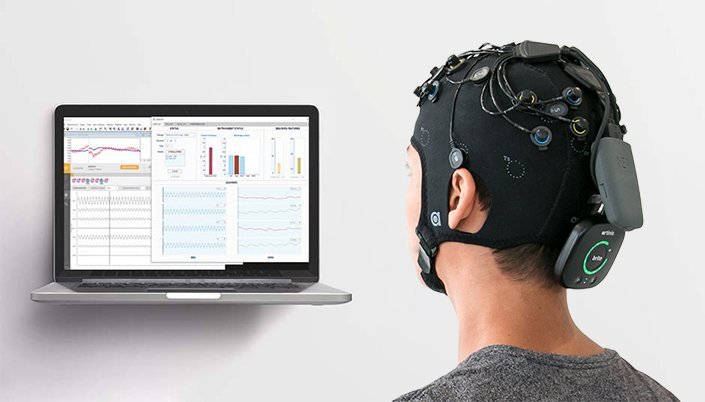



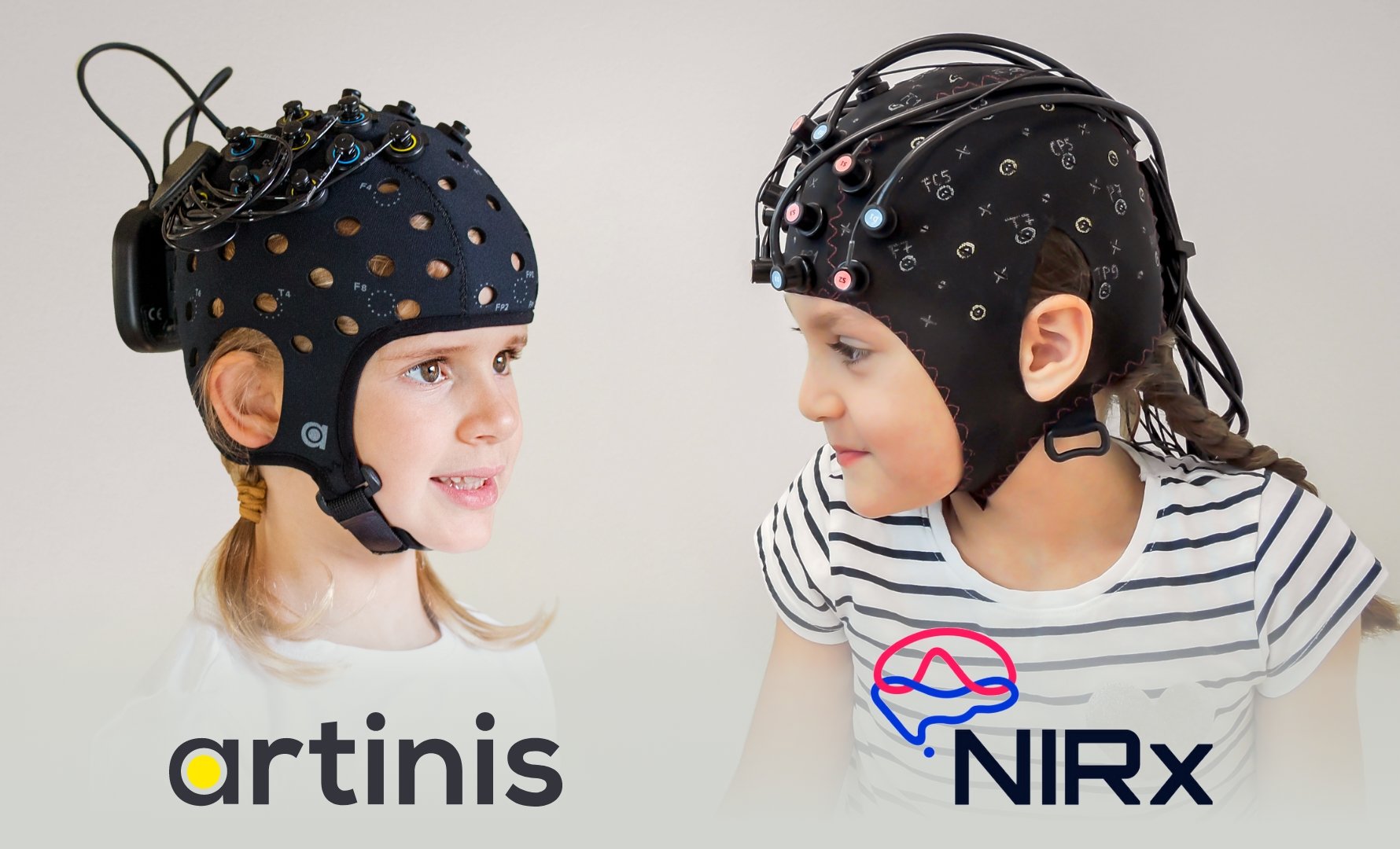
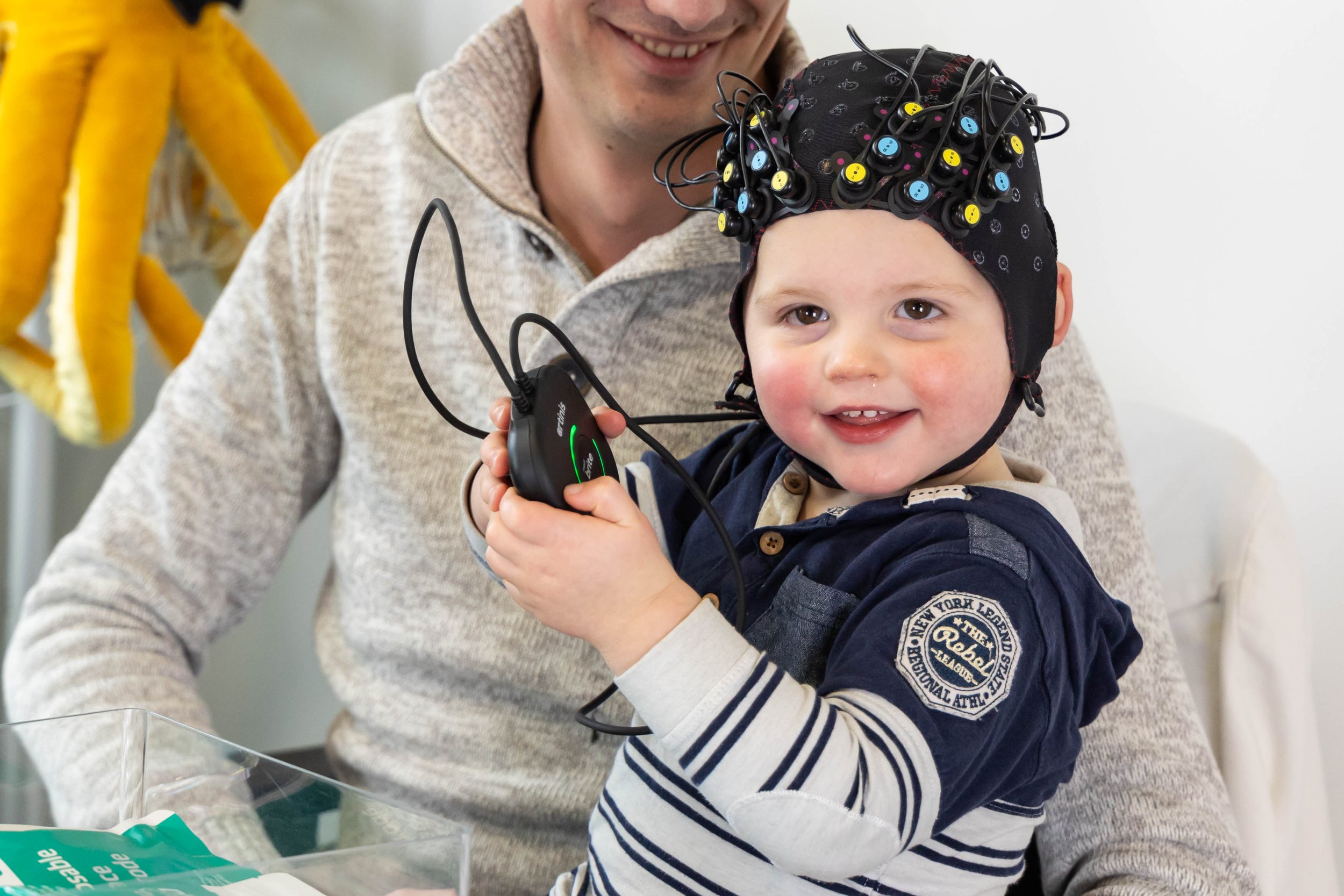

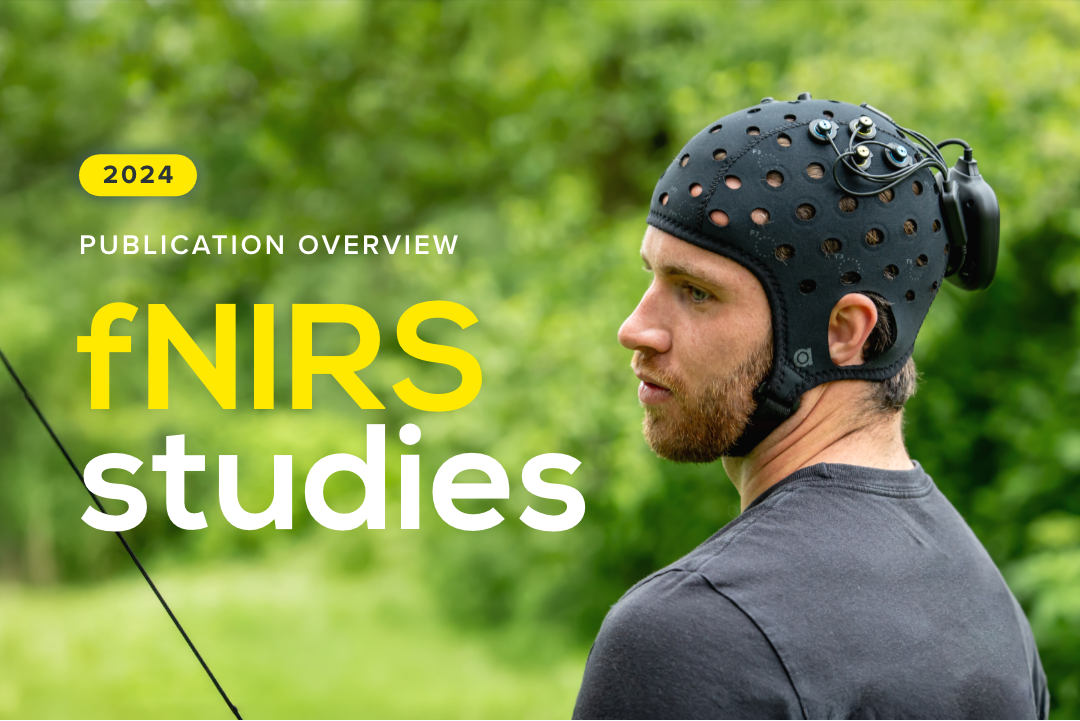
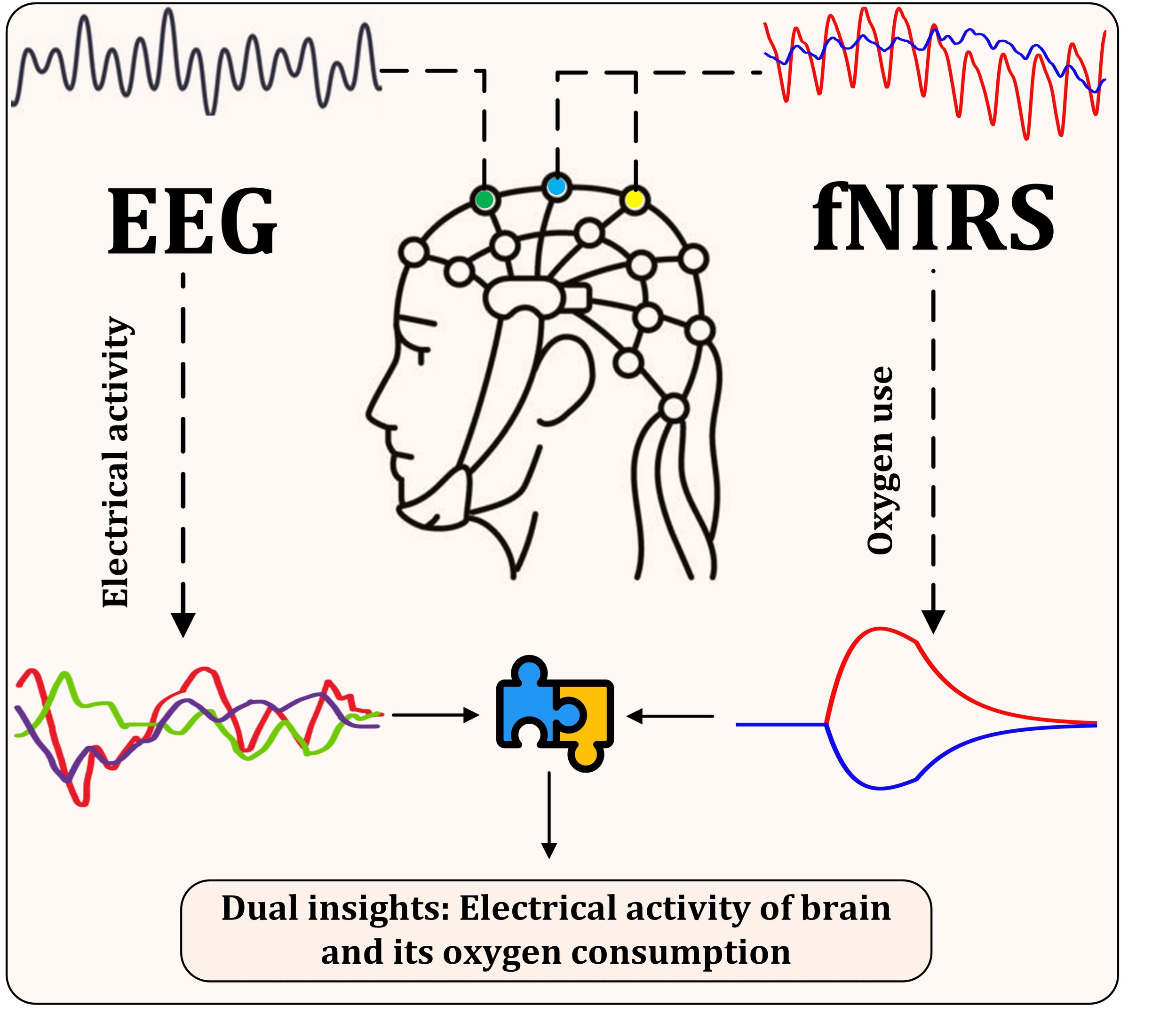
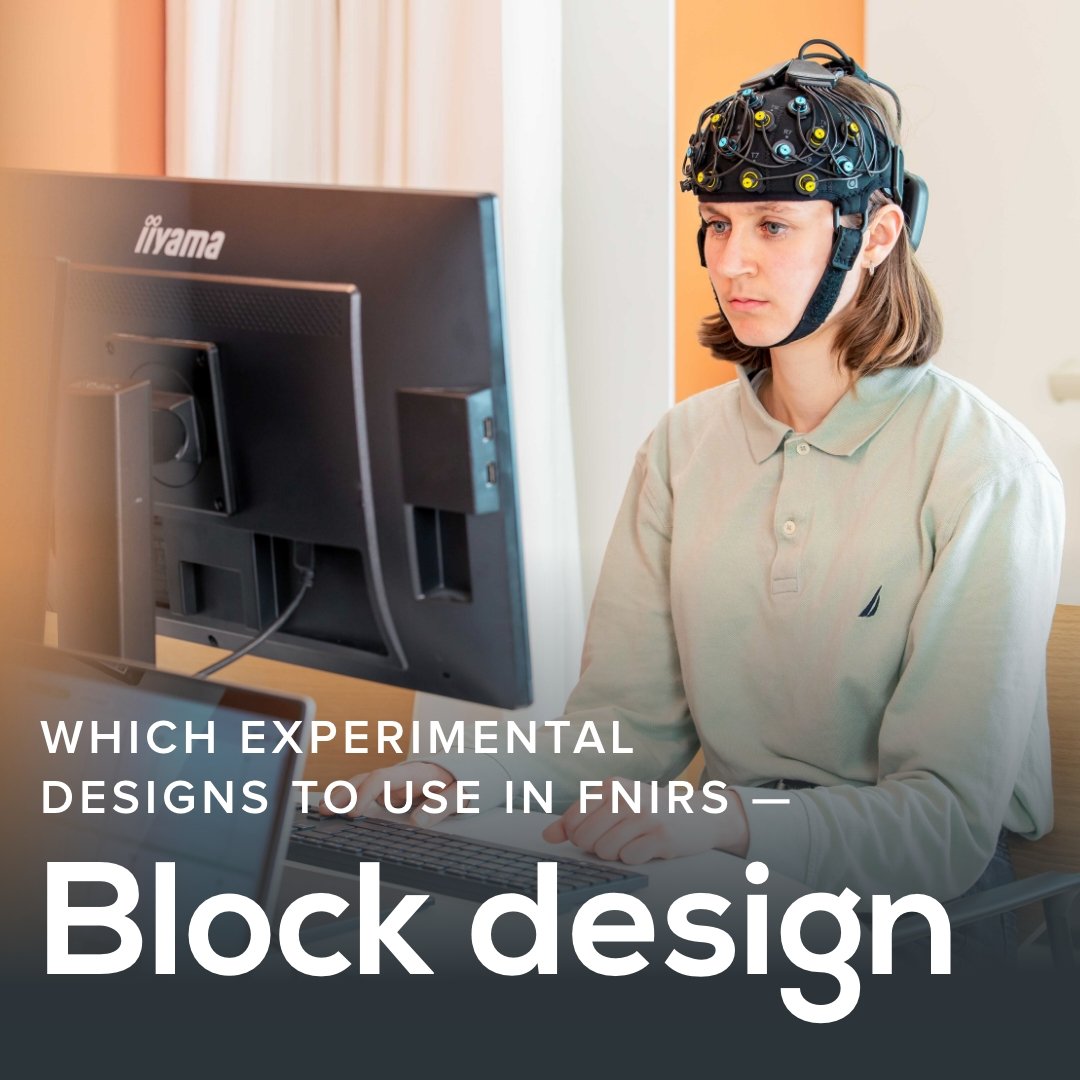
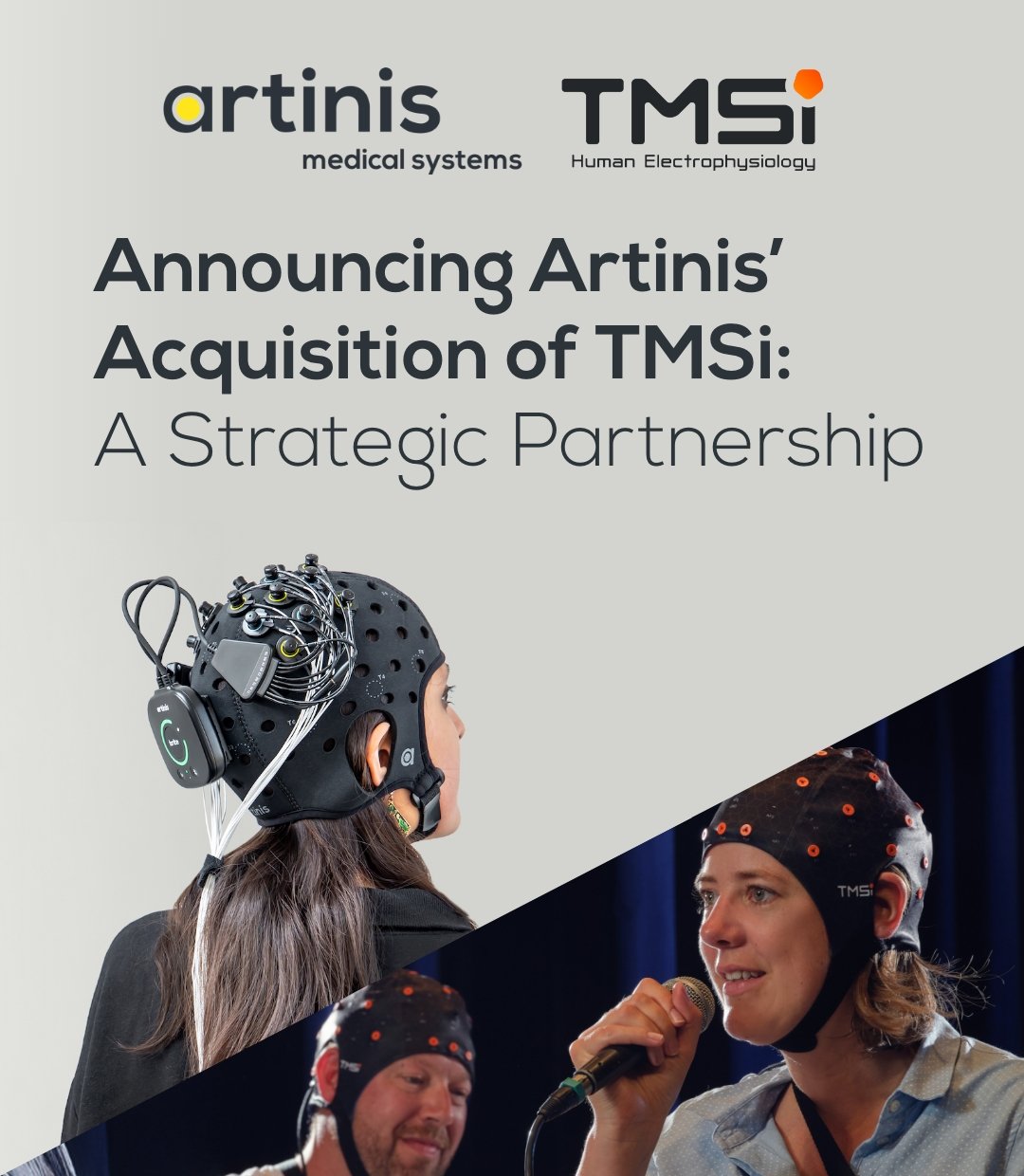
Our fNIRS devices offer a high sampling rate, enabling extraction of additional physiological parameters, including respiratory rate (RR). These parameters can provide important additional information that can be used as adjunction to cerebral activity measures. In this blogpost, the possibility of RR estimation from fNIRS in a resting state is discussed in the form of a case study.